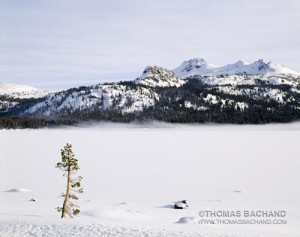This winter, concerns over effects of 130 years of invasive species in Lake Tahoe heated up when concern over the pervasive quagga mussle led to an agreement that all boats must be cleaned before being launched into Tahoe’s crystal clear waters. Restrictions on boat launches have been put in place. Please support the League to Save Lake Tahoe’s more comprehensive measures.
Information on Lake Tahoe’s invasive aquatic species can be found at the Tahoe Environmental Research Center, the League To Save Lake Tahoe, and this presentation by University of Nevada’s Sudeep Chandra.
This issue of invasive species is by no means unique to Lake Tahoe, but Tahoe is a natural point of convergence and, once again, a microcosm of environmental concerns elsewhere. Boats from as far away as Idaho and Texas are regularly put into Tahoe. The April 2009 issue of National Geographic Magazine makes two references to California’s Sierra Nevada, one in this article on effects of invasive species and disease on amphibians.
Lake Tahoe boat launch information can be found at Tahoe Resource Conservation District.

